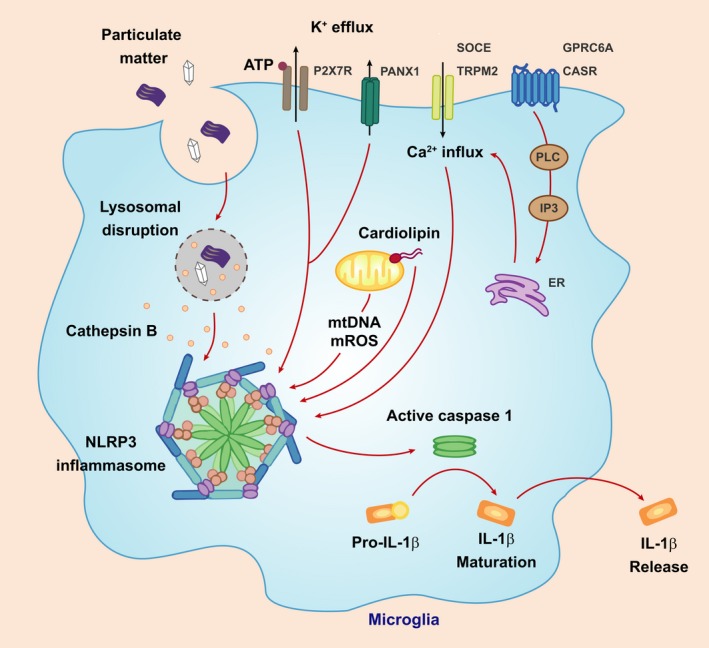Figure 3.

Pathways regulating NLRP3 inflammasome activation. Various stimuli, such as excessive ATP, viral RNA and particulate matter (e.g. protein aggregates or crystalloid structures) have the ability to activate the NLRP3 inflammasome and induce the maturation and secretion of interleukin‐1β (IL‐1β). An excess of ATP, and most other NLRP3 activators bring about the efflux of K+. An increase in intracellular Ca2+ from intracellular stores or via transmembrane transporters has been associated with NLRP3 inflammasome activation. The production of reactive oxygen species (mtROS), as a result of mitochondrial dysfunction is another potential driver of inflammasome activation. Lastly, particulate matter taken up via phagocytosis can lead to lysosomal membrane permeabilisation, the leakage of cathepsin B and other cysteine proteases and NLRP3 inflammasome activation.
